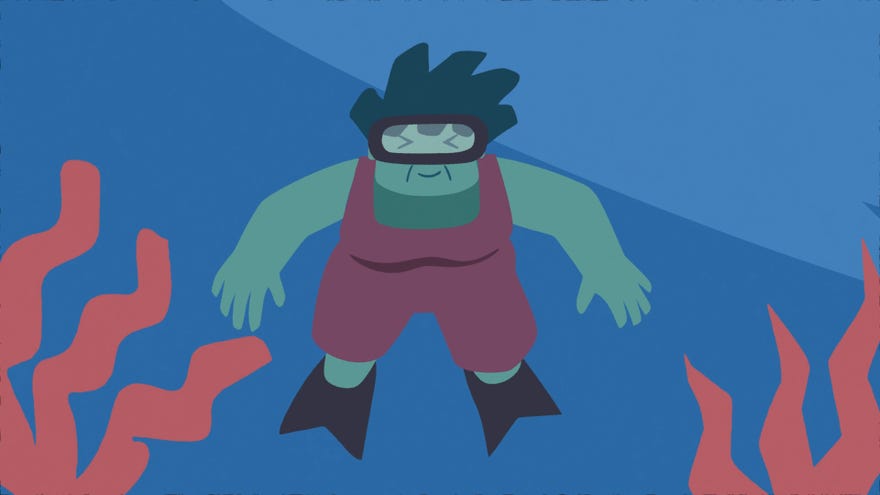Saltsea Chronicles review: an enthralling high seas mystery adventure
Pushing the boat out
Whereas most games begin by getting you into the action as quickly as possible, Saltsea Chronicles opens with a quick note about its save system. It's a small, but important detail in this story-driven adventure game, as throughout its nine-to-ten-hour run time, you'll be faced with various decisions about where your crew of post-apocalyptic drifters will explore next, as they set sail in search of their missing captain Maja. By choosing one island at the end of every chapter, you'll naturally miss out on visiting another - and with 14 locales to explore in total in the Saltsea archipelago (and only 12 chapters to do it in), each playthrough has the potential to end up being quite different from the last.
But up front it tells you "There are no wrong choices, only your choices" in Saltsea Chronicles, and that ultimately this is a tale about "tracing different pathways" using its clever branching save system. While you can, of course, play it through from start to finish in a single swoop, you also have the option to purloin its additional save slots to take those roads less travelled (presented here as delightful, wiggling seaweed tendrils), and all without overwriting your existing adventure. Immediately, that sense of FOMO is dispelled, and instead of worrying about 'seeing everything' or making sure you get a 'good' playthrough, you can simply enjoy its enthralling tale of high seas soap opera, curious exploration, and the knotty drama that comes with trying to forge connections in an increasingly fragmented world. It's a journey well worth taking, even if what lies at the end of it didn't quite come together in the way I'd hoped.

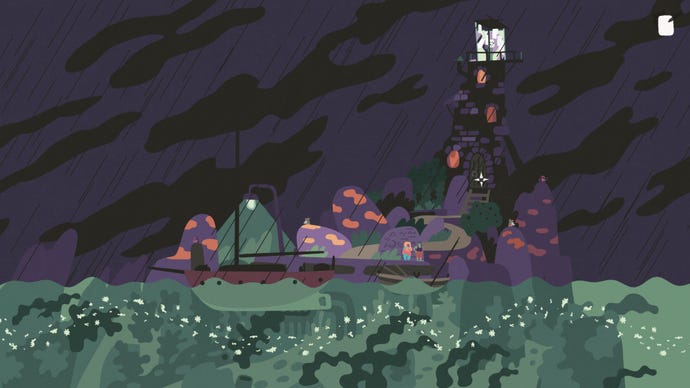
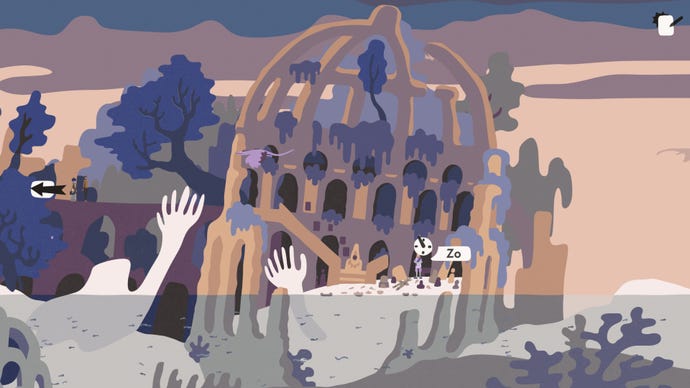
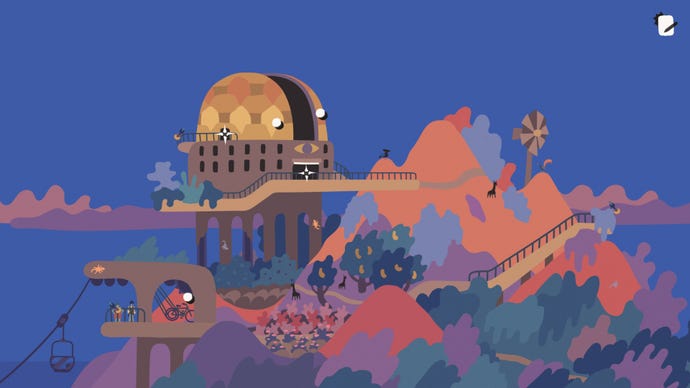
But that's getting ahead of myself. Your starting point in Saltsea Chronicles is always the same: the Orkney-inspired island of Njarfie Roust, where your four-strong crew of adventurers are awaiting the day they'll set sail on their newly refurbished boat, along with their beloved captain Maja at the helm. Personalities, motivations and the wider history of this flooded future world are established quickly with sparse, but evocative prose, and its expressive array of character portraits instantly make it clear this bunch are going to be very good hangs for the rest of the game. The landscapes of Saltsea are similarly captivating from the off, as well. Like Die Gute Fabrik's previous game, Mutazione, these striking, and sometimes surreal, tapestries of bright block colours are a real feast for the eyes, setting your imagination alight with possibility, and make you excited for the journey ahead.
Alas, on the morning of their proposed departure, Maja vanishes, leaving the rest of the crew rudderless, forlorn and with the wind blown firmly out of their sails. With tensions high and morale low, Saltsea sets the stage for you to wrestle this crew back into shape and resolve their lingering conflicts over the course of the game. It's a fantastic jumping in point, and you're afforded a pleasing amount of freedom in how you go about navigating both its literal and metaphorical waters.

On arriving at a new destination, for example, one character will naturally put themselves forward to lead that day's expedition for clues and information, but you can also pick a companion to bring along for the ride. The resulting conversations between them, as well as their observations about the respective communities you visit, will differ depending on which pairing goes out into the field, and at times, you may even glean extra pieces of slang in different dialects if you happen to bring someone along who can speak the archipelago's various languages. There are also moments when you can bring additional passengers on board to bolster your crew further, as they too have had people spirited away under mysterious circumstances (and in a brilliant nod to the game's Star Trek and TV soap opera influences, they each get their own little fun segment in the per-chapter-intro sequence once they've become full-time cast members).
Everyone's language skills and personal motivations for visiting each island are all tracked and logged in your trusty Almanac, as are their various issues and tensions with one another. These interpersonal dramas are also flagged up clearly in the text itself, both when they first emerge and when progress is made on them, and finally when they eventually resolve themselves, so you're never left in the dark about how they evolve. Resolving these issues takes effort, and you'll need to match characters together on expeditions and take the opportunity to engage in the plentiful supply of optional conversations (again, all of which are marked clearly on your island diorama panels) in order to earn cathartic chats between two former loggerheads.


If you'd rather barrel towards the finish line, though, you can ignore all of the optional conversations and head straight for the star-shaped interaction points that shift the story along. This is where I can't quite iron out the creases in my own feelings about Saltsea Chronicles. Despite styling itself as an adventure game, you're never really solving problems or puzzles in a traditional adventure sense, and most of the time you're simply drinking in the story as you bob about on your journey. There are some items you can pick up and give to other characters at certain points, but this only happened once or twice during a single playthrough, and most of what you find just goes straight into your Almanac as collectable stickers. Really, this is more of a visual novel that's been grafted onto an adventure-style backbone, and ultimately I have zero beef with that. You know me, I love a good visual novel.
But I still can't say I ever truly felt like I was altering the course of the overarching story - even though I was, of course, picking which islands I wanted to visit and which companions I wanted to take with me. Those choices do have an obvious and immediate impact on how the game plays out, but so far at least, the handful of attempts I have made to get to the end have always resulted in visiting the same final island, and the same mildly anticlimactic conclusion.
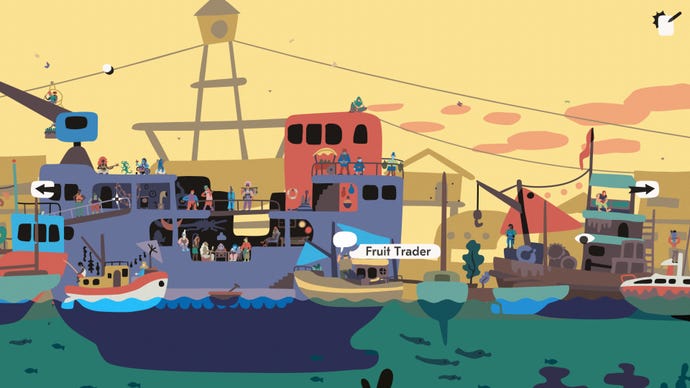

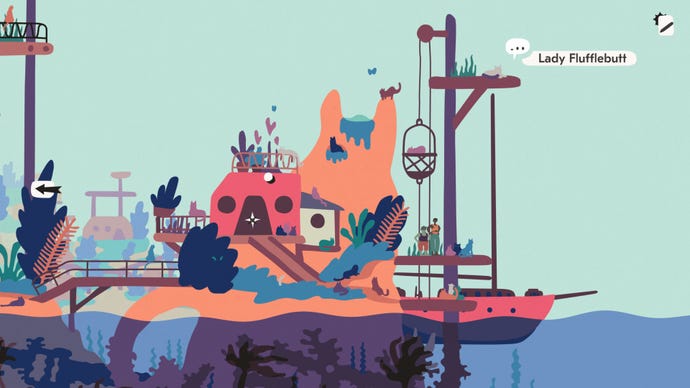
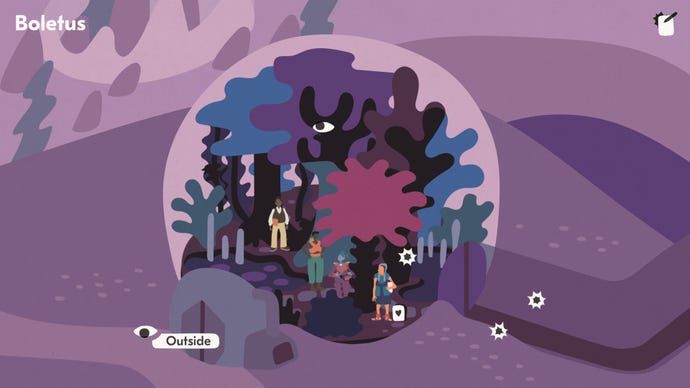
Part of me feels like that ending does hint at something more, but I can't say for certain whether the resolutions I seek are contained within the game, or whether this is simply a cliffhanger for a potential part two. Alas, I don't feel very confident about the former unfortunately, which does, inevitably, cast a bit of a downer on the rest of the game. In Saltsea's defence, it does say that while some events may change depending on your actions, others remain the same regardless. But when those choices are seemingly always funnelled to an end point that, for me at least, doesn't quite stick the landing, I think it's that sense of dissatisfaction that's making me yearn for more control over those final moments.
And yet to boil Saltsea down to those kind of fixed brass tacks of an A-to-B journey also feels a little reductive. I may not have loved what awaited me at its final destination, but the journeys I had getting there were so richly drawn and full of life. This is a beautifully written story, conveying an ocean's worth of depth, meaning and emotion with just a trickle of deftly crafted sentences at a time, and the thorough excavation of its cast's individual foibles, worries and goals made all of them feel like real, warm human beings.

There is so much I adore about Saltsea Chronicles. The characters, the setting, the look of the damn thing. It's all absolutely wonderful, and I would gladly make several more roundtrips with the De Kelpie crew without batting an eyelid (although I will make a stop at cat island Los Gatos every. Damn. Time. Mark my words). It's just… that ending. It's a sticking point I can't quite resolve, causing that dreaded FOMO net to creep back in and loom eerily around my shoulders. Perhaps that's the point. Perhaps my desire for a heroic and triumphant final flourish simply doesn't fit within the confines of what this ragtag bunch of ordinary folk can realistically achieve. Perhaps, it's a story for another time.
This review is based on a retail build of the game provided by developers Die Gute Fabrik.
Disclosure: Die Gute Fabrik creative director Hannah Nicklin has written for RPS as a contributor in the past.
